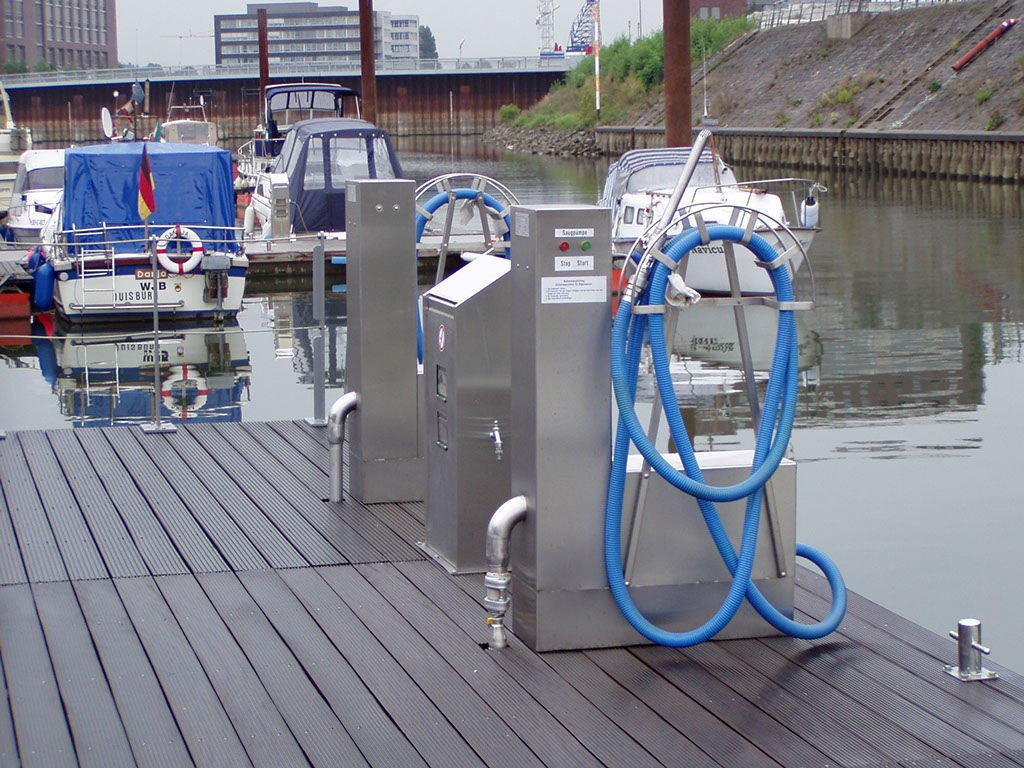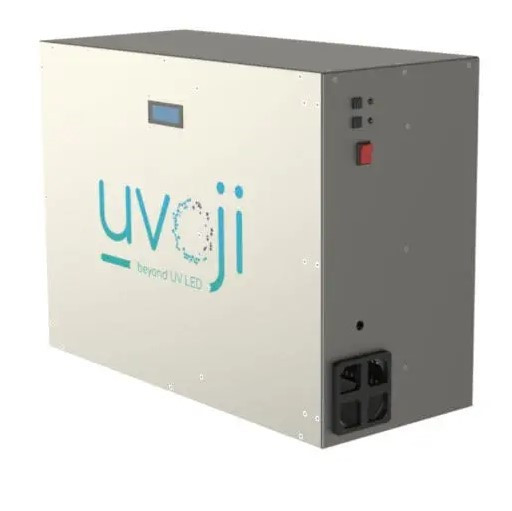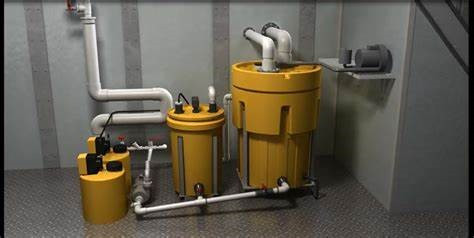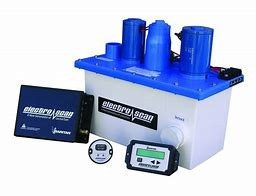WATER ON BOARD #3

WASTEWATER DISCHARGE & TREATMENT
For centuries, the oceans have naturally regulated global temperatures: every year, they produce around 50% of the Earth's oxygen, making them essential to our survival. Faced with the various threats that continue to grow on a daily basis, we need to take action to drastically reduce any marine pollution.
Among these threats, the most overlooked in our water system in recent years has been the discharge of wastewater. As one of the main causes of ocean pollution, rethinking the quantity and quality of what we discharge into the sea is no longer an option. In fact, the current risk of water shortages is forcing us to explore even further the possibilities of reusing our wastewater.
At Excess, we believe that the desire for both self-sufficiency and progress can drive boatbuilding towards “responsible” boats. In this article, we focus on the treatment of wastewater and, more specifically, the development of solutions for its reuse.
At sea, the discharge of wastewater not only represents a significant loss of freshwater, but also an ecological disaster that will inevitably disrupt the marine ecosystem and related human activities, such as fishing and fishfarming. The proliferation of green algae is a case in point around Europe's Atlantic coastline. In the western Atlantic, particularly in the Caribbean, sargassum is gaining ground! The quality of bathing water is also affected by wastewater discharges, and where such waters are supervised by local authorities, they are increasingly being closed to bathing, as they pose a measurable threat to human health.
Faced with these realities, maritime regulations are becoming increasingly widespread. At a global level, the IMO, with regulation N°11 of the MARPOL convention, sets international rules on discharges into the sea: under penalty of a €4,000 fine for leisure boaters:
- Un-macerated and non-disinfected wastewater must be discharged at a distance exceeding 12 nautical miles.
- At distances between 3 and 12 nautical miles, these discharges must be macerated and disinfected by approved devices.
- Within 3 nautical miles of a coastline, no discharge is permitted.
For discharges between 3 and 12 nm, a discharge rate has been set when using approved devices. It sets limits on 3 particularities:
- B.O.D.5 (5-day Biochemical Oxygen Demand). This is the quantity of oxygen required by micro-organisms to degrade all the organic matter in a given water sample. It is set at < 50 mg/l by international regulations and < 40 mg/l by European standards.
- SPM (Suspended Particulate Matter). Regulations set a maximum weight and size for solid micro-organisms present in macerated wastewater. This is set at < 50 mg/l by the convention and < 30 mg/l in Europe.
- Fecal coliforms are set by international regulations at < 250 units/100 ml.
For recreational boating, an activity that has difficulty adapting to these rules, the law of December 30, 2006 is the first initiative, requiring boats built since January 1, 2008 to be fitted with a wastewater storage or treatment system.
At a local level, initiatives to monitor and enforce these rules are flourishing. In the Mediterranean, for example, a growing number of anchorages known as “clean anchorages” are only accessible to vessels equipped with a black water collection or treatment system. In the United States, zones known as NDZ (no discharge zones) prohibit discharges into the sea. Turkey, on the other hand, does not authorize any discharge of water, even after treatment and even beyond the 3 nm limit. The only solution is the use of pumping stations controlled by magnetic card registration. Since 2008, Europe has banned the use of chlorinated products in the treatment of black water.

In the absence of systems suited to small leisure craft, we are still turning a blind eye to discharge practices in recreational boating. While we await the introduction of appropriate regulations and a change in boatbuilding practices, it's important to understand that this issue is first and foremost a matter of individual awareness and responsibility. Many pristine anchorages are becoming polluted by wastewater from ever-increasing mass tourism, without any kind of monitoring or control.
Reducing and treating waste at sea:
On board, there are 3 types of wastewater. Grey water, black water and oily water. For all three, there are ways of reducing and/or treating wastewater.
To prevent the discharge of oily water, contaminated by hydrocarbon residues found in the bilges, there's nothing like keeping them clean! By not running bilge pumps automatically, you can control discharge. The most common way of emptying bilges is to use a wet vacuum cleaner and a storage container until arrival at the next port equipped with facility for emptying the container. Isolating the engine in a watertight compartment will reduce the area to be kept clean. Putting oil-absorbent paper under the engine sump, available from any chandlery, can also keep bilges clean. Of course, the best way to avoid having to deal with these polluting waters is to eliminate, through appropriate maintenance, all leaks from the engine, gearbox, tanks and associated circuits (hoses, fittings, gaskets, etc.), maintaining a faultless seal! Bilge pumps can also be fitted with an anti-pollution filter. With its WMS model, WAVE STREAM offers a filtration system that mounts directly onto bilge pumps. Oils, grease or diesel residues are separated from the water and retained in the filter cartridge.
The second source of oily water is the water discharged from the engine cooling circuit. NOx, better known as nitrogen oxide, is a greenhouse gas. It is produced by internal combustion engines and discharged directly into the water through the exhaust system. Poor diesel combustion, which creates the carbon deposits responsible for NOx emissions, is often the result of an engine running at too low an rpm, a blocked air intake or poor fuel quality. Proper maintenance and use of your boat's engine will prevent the production of carbon deposits. In addition to maintaining and ensuring that the injectors are correctly adjusted for the best possible combustion, you'll need to change the air filter and regularly clean the exhaust elbow and waterlock.
Periodically, you can call on a marine engineering company equipped with a hydrogen descaling station to treat your circuit. This natural decontamination process works by enriching the air to fuel mixture in the engine. This non-aggressive, environmentally friendly technique requires no chemicals or corrosive agents, just water. Scale is dissolved and evacuated naturally with the exhaust gases, before being collected in a special filter. This reduces engine pollution by around 90%, restoring its original performance and cutting fuel consumption.
Lastly, since 2022, marine engine manufacturers such as Yanmar and Volvo Penta have been introducing new models equipped with SCR (Selective Catalytic Reduction) technology, better known as Adblue. Combined with the use of biofuel, this development could reduce emissions of these ultra-polluting gases by up to 75%. This technology has yet to become widespread or be adapted to all engine models.
Grey water/black water: think about treatment, discharge or reuse.
Grey water, which is most commonly discharged overboard, directly into the sea, is toxic for the environment. Solutions to avoid harmful discharge start with simple gestures. Save water, go ashore to wash dishes and clean up, using the port’s facilities. At anchor, wash your dishes in seawater. If the boat doesn’t have a seawater tap in the galley, the bucket technique in the sink or on the sugarscoop will do the job. Use natural detergents such as citric acid or borax, and products carrying an “ecological” label, as available from most chandlers. European Ecolabel or Ecocert-certified, 100% biodegradable products should be preferred. By avoiding the use of conventional cleaning products such as detergents containing ammonia, sodium or chlorinated solvents, you can reduce your impact and open up the possibility of reusing this water thanks to new treatment technologies.
Grey water, with no added pollutants, becomes easily treatable and therefore reusable. It's this solution that we feel is essential to develop. By separating the supply circuits into two separate tanks: one for treated pure water, supplying dishwater and shower water as in the conventional circuit, while black water would be supplied by the second tank, containing pre-treated grey water. Water treatment specialists Uvoji, who we mentioned in the previous article on drinking water treatment, are currently developing a system for treating grey water using a UV reactor with their OJI REUSE model. Once treated, it can be stored in a second on-board water tank, supplying the WCs as well as a water outlet on deck for routine boat maintenance. Operating at 24V, it would consume little energy and recover up to 75% of the treated water. An increase in self-sufficiency and a genuine solution for the treatment of grey water discharge.

Black water, on the other hand, introduces the risk of bacteriological contamination, which can have serious health consequences, particularly for swimmers. The risk is particularly high in areas with a high concentration of anchored boats and is even greater in protected anchorage areas where the water is not renewed. This, especially when you consider that a boater discharges an average of 10 liters of black water per day.
As discharging less than 3 nm from the coast is prohibited, the solution of retaining it on board has become widespread. The majority of black water tanks are fitted with a valve system that allows them to be discharged overboard once offshore or emptied by suction pump using dockside facilities. These tanks are installed during the boat’s construction or can be adapted to equip existing marine toilets. If there isn't enough space on board for a standard tank, there are small tanks that can be fitted around existing toilets. There are also chemical toilet solutions (as used in RVs) with removable tanks that can be emptied at facilities ashore.
With this new need for boaters to empty their tanks, infrastructure for pumping out waste water has increased. It comes in various forms: fixed pumping stations, often found on or adjacent to the fuel dock. In some well-equipped ports, you'll find remote pumping stations. CEI (a company specializing in port effluent treatment) has developed a new model for use directly at the pontoon. In France, the first installation at the port of Le Crouesty in Brittany’s Gulf of Morbihan in the spring of 2011 has proved popular with boaters. The company Ecotank has designed aluminum barges capable of working with boats both alongside the dock and at anchor.

If you discharge it, treat it... as with the treatment of drinking water, there are several processes for treating wastewater. With its Marine FAST-LX solution, Bio-microbics offers a certified solution. This mini treatment plant uses a biological waste purification process, accelerated by oxygen injection, to enable bacteria to rapidly and continuously consume organic matter. Developed for vessels with smaller crews (up to 50 people), this solution is still too large for leisure craft, and operates on 220V, making it too energy-hungry for our particular boating needs. But it's worth pursuing...

For vessels built prior to 2008 and that use seawater, there is the compact ELECTROSCAN seawater treatment plant developed by Raritan. Transforming seawater into a powerful bactericide through the phenomenon of electrolysis, it can treat the black water of two toilets and, thanks to a small retention capacity, allow the discharge of purified waste in authorized areas. Ideal for boats equipped with older seawater toilet systems and manual pumps. Unfortunately, this treatment system, which is approved in the USA, is not approved in Europe, where the use of chlorine is banned in the treatment of black water, and this is produced by the electrolysis process

As with grey water, the UV process has demonstrated its worth in black water treatment. It proves to be the most compact, least energy-consuming and most ecological solution, requiring no chemical treatment. Reuse of this water may well be possible.
If we look even further ahead, the UV process combined with reverse osmosis, eliminating chlorine and heavy metals, could offer a complete purification system and safe drinking water... closed-circuit water? Imagine the progress! What's more, we know that wastewater reuse already exists in some parts of the world: in California, for example, Orange County has long been reusing its purified water by supplying surface water used as stock for potable water stations in times of drought. This has also been achieved in Singapore and Namibia. All that remains is to encourage research and develop models adapted to our kind of boats.
Let's remain utopian … Less is more!



